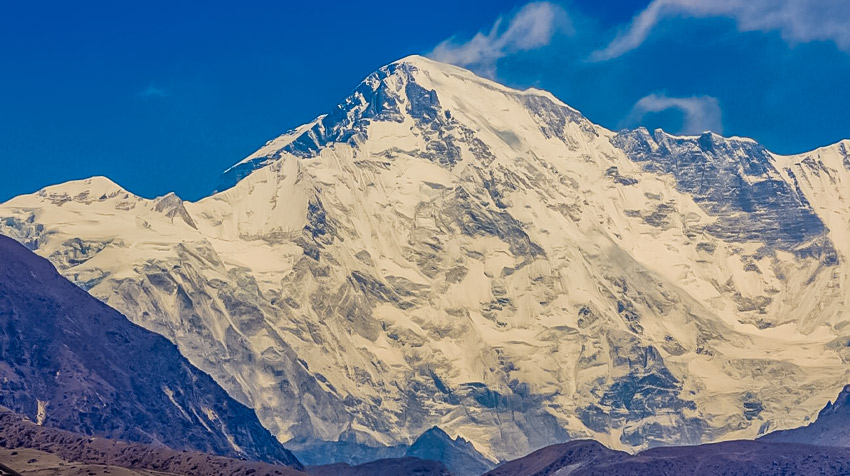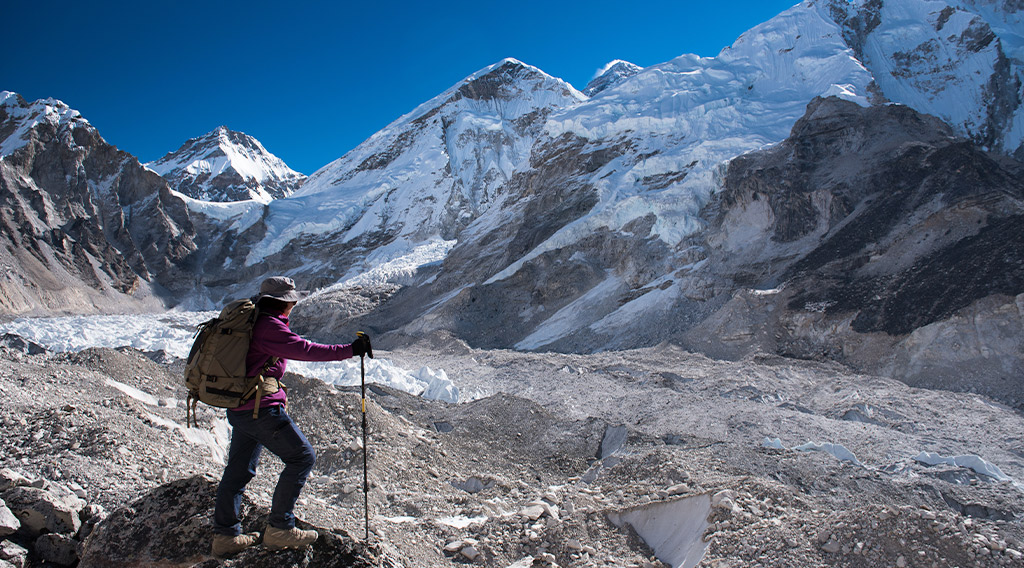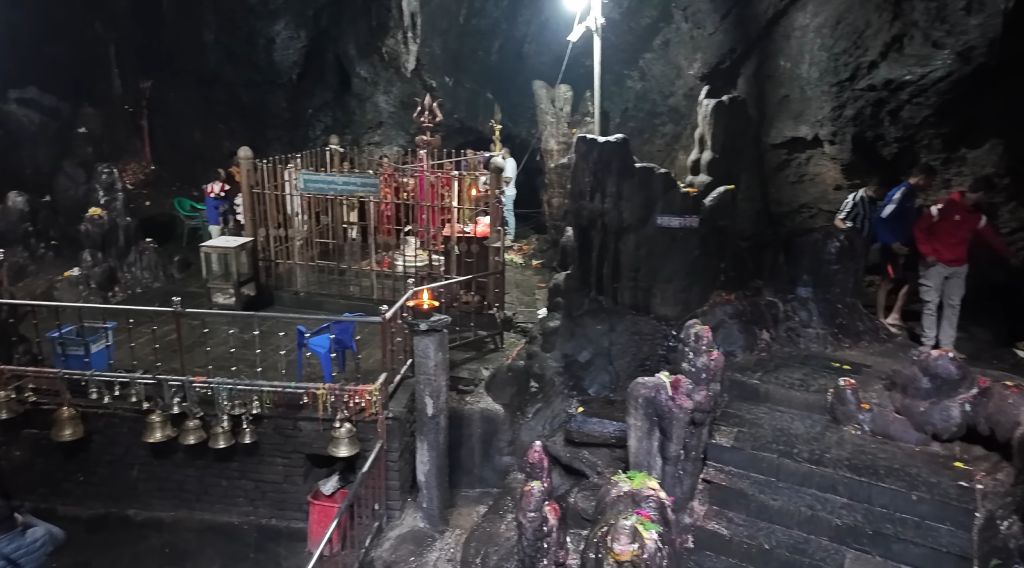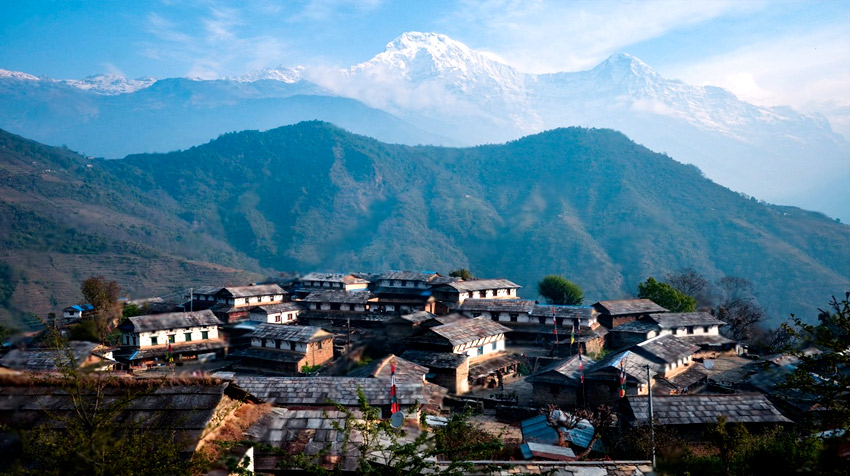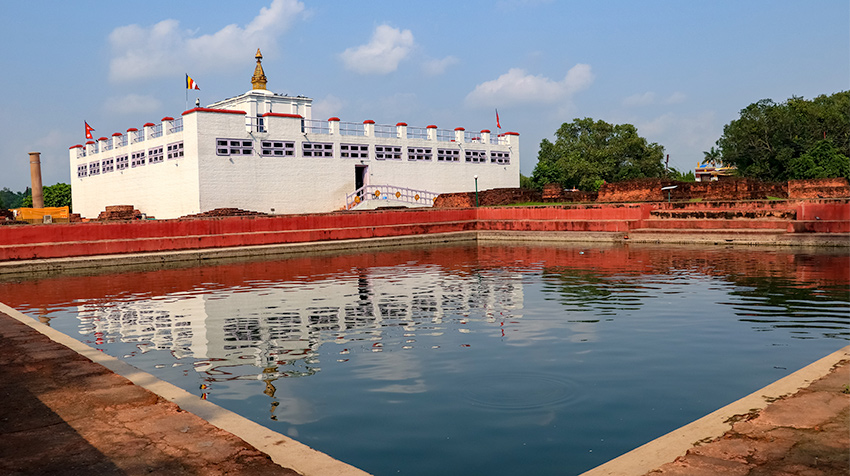Dhorpatan Hunting Reserve: A Unique Destination for Hunting and Wildlife Enthusiasts
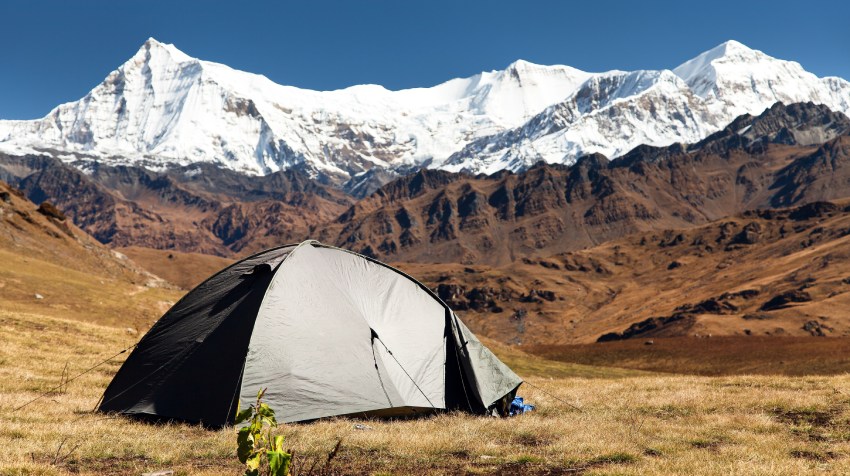
Situated in the western region of Nepal, the Dhorpatan Hunting Reserve is a haven for hunting lovers and wildlife enthusiasts. The privilege of hunting within Dhorpatan is strictly regulated and controlled to maintain ecological balance. A limited number of permits are issued yearly, and hunting is permitted only during specific seasons. These measures ensure that hunting activities do not jeopardize the wildlife population, promoting sustainable hunting practices that align with conservation goals.
Beyond hunting, Dhorpatan Hunting Reserve offers many opportunities for trekking and wildlife viewing. Visitors can immerse themselves in the region's natural beauty and biodiversity, exploring rugged terrains, pristine forests, and breathtaking landscapes. The reserve's stunning scenery and challenging terrain make it a popular destination for adventurers and nature lovers.
The Dhorpatan Hunting Reserve is a prime hunting destination, a sanctuary for diverse wildlife, and a playground for outdoor enthusiasts. What sets it apart is its unique blend of regulated hunting and conservation. This approach ensures that visitors experience the best of what Nepal's wilderness offers while also contributing to preserving the region's ecological balance.
Introduction
Nestled in the rugged hills of western Nepal, the Dhorpatan Trek represents a unique blend of natural beauty and controlled hunting. Established in 1987, it is the only hunting reserve in Nepal, covering an expansive area of 1,325 square kilometers. This reserve is a sanctuary for diverse flora and fauna, offering a rare opportunity for nature enthusiasts and hunters to experience the wilderness in its purest form. The reserve's primary objective is to balance conservation efforts with regulated hunting, ensuring ecological equilibrium while providing a remarkable experience for visitors.
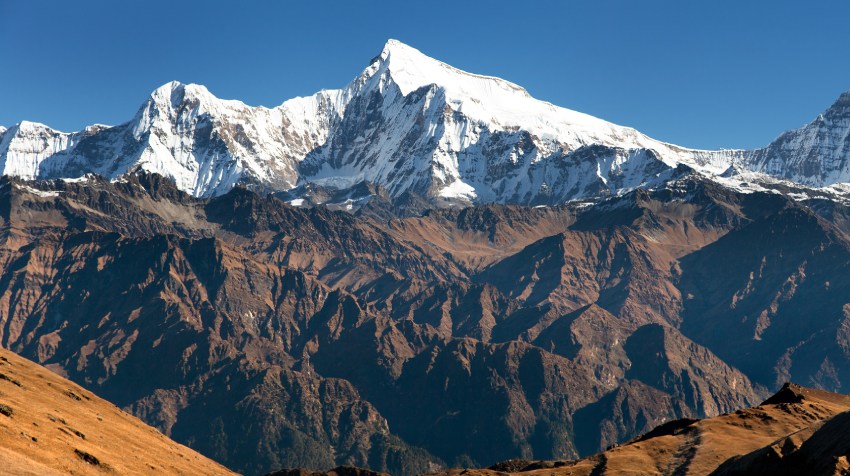
Flora and Fauna
The Dhorpatan Hunting Reserve is a biodiversity hotspot, home to many plant and animal species. The reserve's vegetation is a mix of subalpine and alpine types and temperate forests, making the landscape extraordinarily diverse. Visitors can find plant species such as pine, fir, birch, and various kinds of rhododendrons, which bloom spectacularly in spring, painting the terrain in vivid hues. The area is also rich in medicinal herbs, contributing significantly to the local economy and traditional medicine practices.
The reserve is equally impressive in terms of fauna. Dhorpatan is renowned for its populations of blue sheep and Himalayan tahr, which are among the most sought-after species by hunters. The reserve also provides sanctuary to endangered species such as the red panda, snow leopard, and cheer pheasant, which are strictly protected from hunting. Birdwatchers can revel in the sight of over 137 species of birds, making Dhorpatan a paradise for ornithologists.
Hunting Blocks in Dhorpatan Hunting Reserve
The reserve is divided into seven hunting blocks, each offering unique terrain and challenges. For simplicity, these blocks are often categorized into two principal regions: the Southern Hunting Block and the Northern Hunting Block.
Southern Hunting Block
The Southern Hunting Block, comprising the Barse, Fagune, and Surtibang blocks, is a region characterized by dense forests and steep, rugged terrain, offering hunters a challenging yet rewarding experience. The thick vegetation and difficult paths make hunting in this block an adventurous endeavor suited for those who enjoy the thrill of navigating through untamed wilderness.
Northern Hunting Block
The Northern Hunting Block includes the Dogadi, Seng, Sundaha, and Gustung blocks. This region is relatively more accessible than the Southern Block but is no less challenging. It is renowned for its diverse wildlife, including blue sheep and goral. The Northern Block offers breathtaking views of the Dhaulagiri and Annapurna ranges, making the hunting experience not only about the pursuit but also about absorbing the stunning natural beauty surrounding you.
Best Time to Visit Dhorpatan Hunting Reserve
The best time to visit the Dhorpatan Hunting Reserve is during the spring months of March to May and the autumn months of September to November. These periods offer the most favorable weather conditions, with clear skies and moderate temperatures, making it ideal for hunting and wildlife observation. The spring season, particularly, is marked by the blooming of rhododendrons, adding vibrant colors to the landscape. Conversely, autumn offers crisp air and clear views of the snow-capped mountains, enhancing the overall experience.
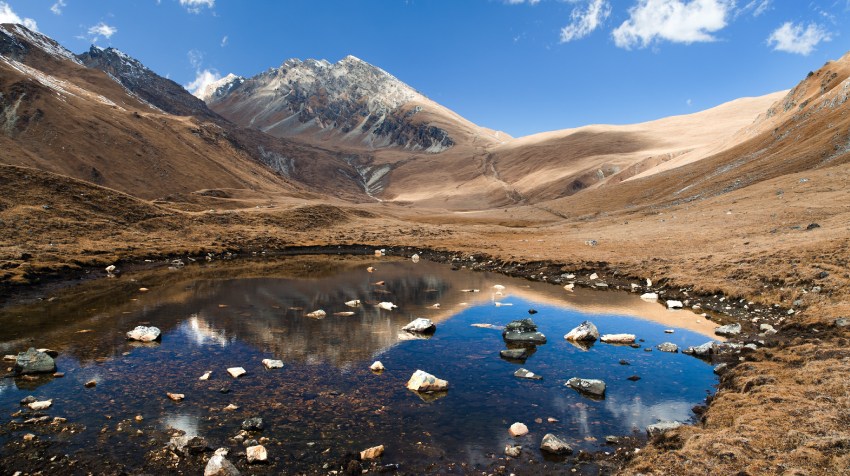
How to Reach Dhorpatan Hunting Reserve?
Reaching Dhorpatan Hunting Reserve involves a combination of road travel and trekking. The nearest major city is Kathmandu. From Kathmandu, you can take a domestic flight or drive to Baglung, the gateway to the reserve. The drive offers scenic countryside views and takes approximately 10-12 hours. From Baglung, a rugged road leads to Burtibang, the last motorable point. From Burtibang, visitors must trek for about two days to reach the reserve. Chartering a helicopter is an option for those seeking a more comfortable and direct approach, significantly reducing travel time and providing aerial views of the stunning landscape below.
Highlights of Dhorpatan Hunting Reserve
Unique Hunting Experience: Dhorpatan Hunting Reserve stands out as the only hunting reserve in Nepal that offers a regulated and controlled hunting experience. This unique feature attracts hunters from around the world who are looking for an exclusive hunting adventure.
Biodiversity: The reserve is a treasure trove of biodiversity, home to various plant and animal species, including endangered ones. This rich biodiversity makes it a crucial area for conservation efforts.
Scenic Beauty: The reserve offers stunning landscapes with breathtaking views of the Dhaulagiri and Annapurna ranges. The diverse terrain, ranging from dense forests to alpine meadows, adds to the scenic beauty.
Cultural Interaction: Visitors can interact with local communities and learn about their traditions, culture, and way of life. This cultural exchange enriches the overall experience and provides deeper regional insights.
The challenging terrain and diverse wildlife make Dhorpatan an ideal destination for adventure enthusiasts. Whether trekking through rugged paths or hunting in dense forests, the reserve offers numerous opportunities for thrilling adventures. The diverse terrain and wildlife promise an adventure-filled experience that will exhilarate you.
Accommodation Options at Dhorpatan Hunting Reserve
Accommodation options within the Dhorpatan Hunting Reserve are intentionally limited, reflecting its commitment to maintaining its natural state. This exclusivity allows most visitors to prefer camping, enabling them to immerse themselves fully in the wilderness. Camping in the reserve can be a rewarding experience, offering a chance to connect with nature in its purest form.
For those who prefer a roof over their heads, basic lodges and homestays are available in nearby villages such as Burtibang and Lulang. These accommodations provide essential amenities and a chance to experience local hospitality. For visitors seeking more comfort, hotels and guesthouses in Baglung offer a range of services and facilities.
Which Animals Are Allowed to Hunt in the Dhorpatan Hunting Reserve?
The Dhorpatan Hunting Reserve permits the hunting of specific species under strict regulations to ensure ecological balance and conservation. The primary animals allowed for hunting include:
Blue Sheep (Pseudois nayaur): Known for their agility and strength, blue sheep are a prized target for hunters. The population is monitored regularly to ensure sustainable hunting practices.
Himalayan Tahr (Hemitragus jemlahicus): These herbivores are known for their impressive horns and thick fur, making them a challenging and rewarding game for hunters.
Hunting endangered species and other wildlife is strictly prohibited to protect biodiversity and maintain ecological balance. The reserve's regulations ensure that hunting activities do not harm the wildlife population.
Permits for Hunting in Dhorpatan Hunting Reserve
Hunting in the Dhorpatan Hunting Reserve requires obtaining a special permit from the Department of National Parks and Wildlife Conservation (DNPWC). The process is designed to ensure compliance with regulations and sustainable hunting practices. Here is a step-by-step guide to obtaining a hunting permit:
Application: Hunters must apply through authorized hunting agencies. These agencies facilitate the application process and ensure that all requirements are met.
Documentation: Applicants must submit necessary documents, including identification, proof of previous hunting experience, and other required information.
Fee Payment: A fee is required to obtain the permit. The cost varies depending on the species and duration of the hunting trip.
Approval: The DNPWC reviews the application and approves the permit if all conditions are met. The approval process ensures that the hunting will not adversely affect the wildlife population.
Guided Hunts: A licensed guide must conduct all hunting activities. The guide ensures compliance with regulations and assists in the hunt.
Dhorpatan Hunting Reserve Regulations to Follow by DNPWC
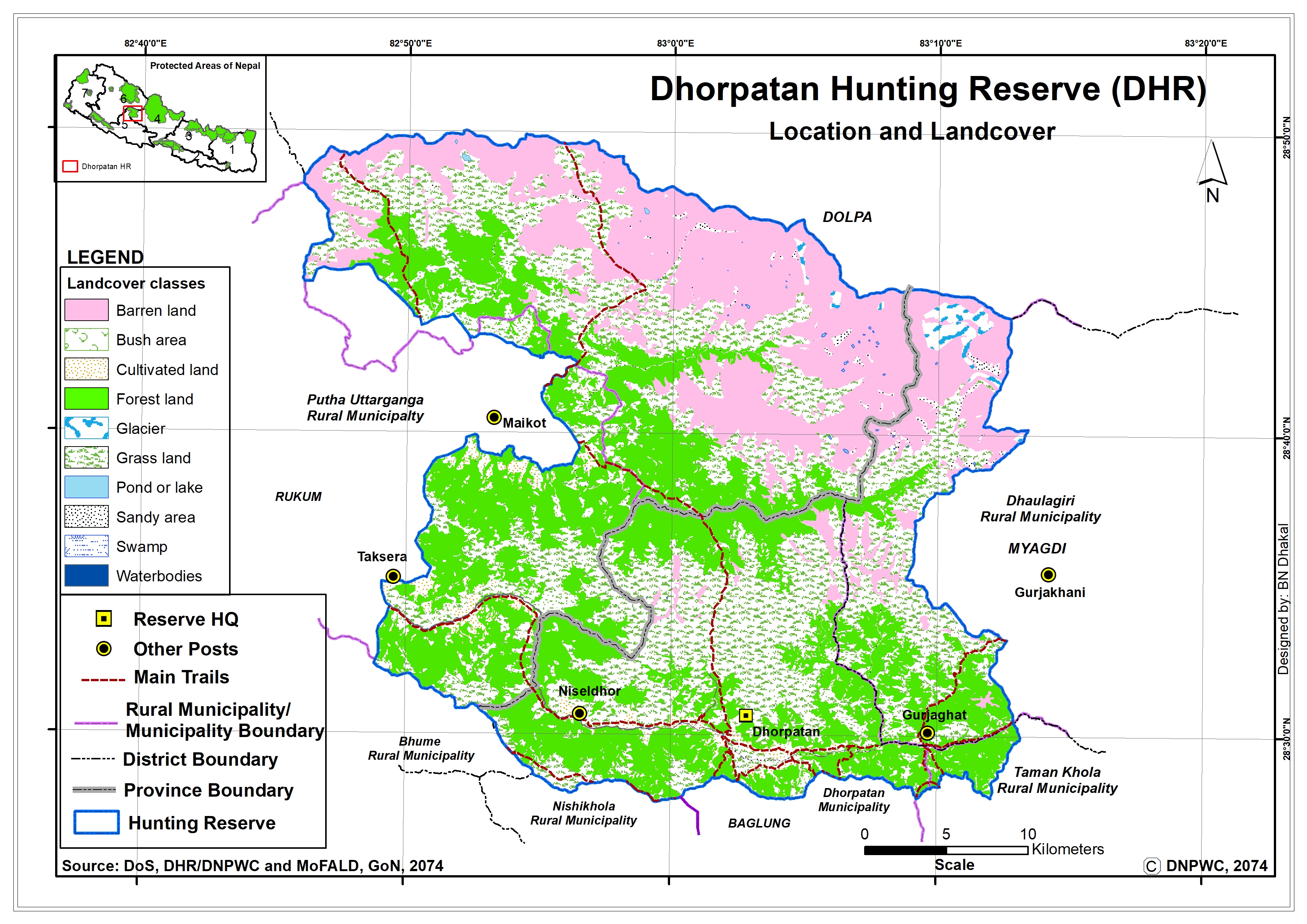
The Department of National Parks and Wildlife Conservation (DNPWC) has established several regulations to ensure sustainable hunting practices and wildlife conservation. These regulations are crucial for maintaining the ecological balance and protecting the reserve's biodiversity. Key regulations include:
Permit Requirement: Hunters must obtain a valid permit before engaging in any hunting activities. Unauthorized hunting is strictly prohibited and punishable by law.
Species Restrictions: Only specified animals such as blue sheep and Himalayan tahr can be hunted. Hunting of endangered and protected species is strictly prohibited.
Guided Hunts: All hunting activities must be conducted with a licensed guide. The guide ensures that hunting is carried out in compliance with regulations and provides assistance and expertise during the hunt.
Seasonal Restrictions: Hunting is allowed only during designated seasons to avoid disturbing wildlife during critical periods, such as breeding and rearing young.
Bag Limits: There are strict limits on the number of animals that can be hunted. These limits are determined based on population assessments to prevent overexploitation and ensure sustainable hunting practices.
Ethical Hunting Practices: Hunters must follow ethical hunting practices, including fair chase and humane treatment of animals. The use of illegal hunting methods, such as traps or poison, is strictly prohibited.
Conclusion
Dhorpatan Hunting Reserve is a testament to the harmonious coexistence of conservation and controlled hunting. It offers a unique opportunity for hunters to engage in their passion while contributing to preserving wildlife and their habitats. With its diverse flora and fauna, breathtaking landscapes, and regulated hunting practices, Dhorpatan Hunting Reserve is where nature and hunting converge. Whether you are a hunter, a nature lover, or an adventurer, this reserve promises an unforgettable experience.
By maintaining strict regulations and promoting sustainable practices, the Dhorpatan Hunting Reserve ensures that future generations can continue to enjoy its natural beauty and abundant wildlife. It is a shining example of how conservation efforts can be balanced with recreational activities, benefiting the environment and the people who cherish it.


